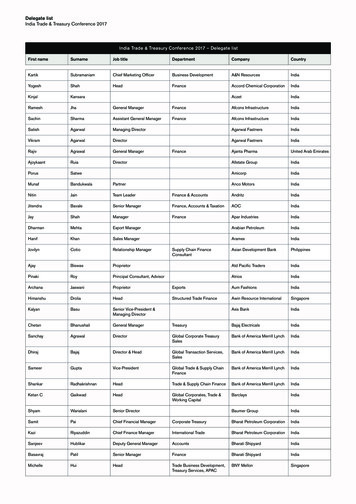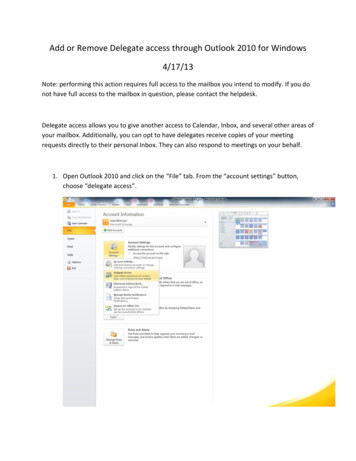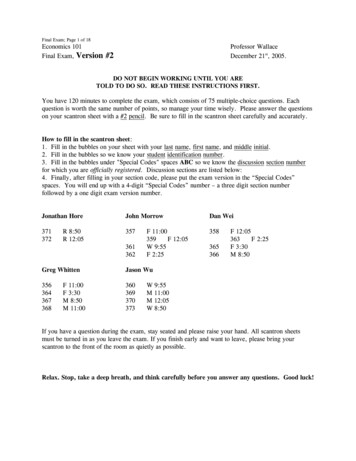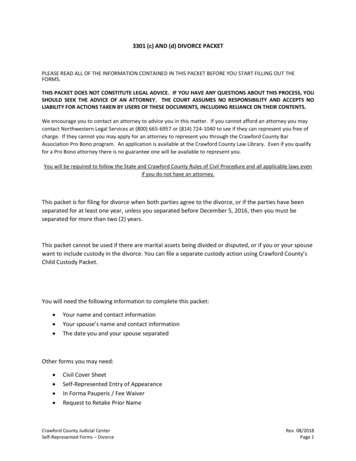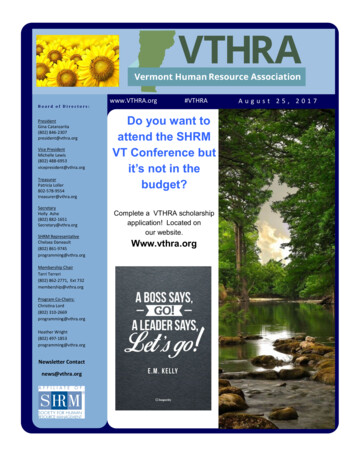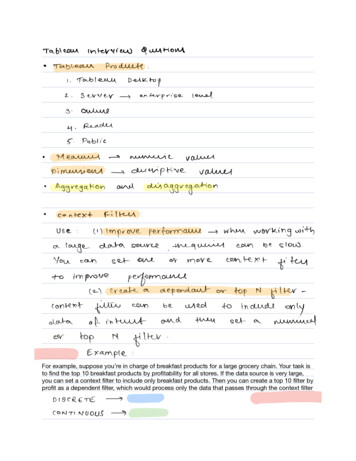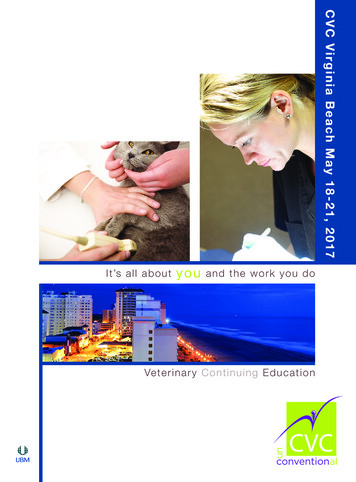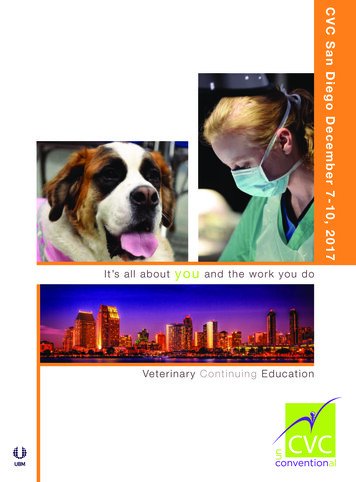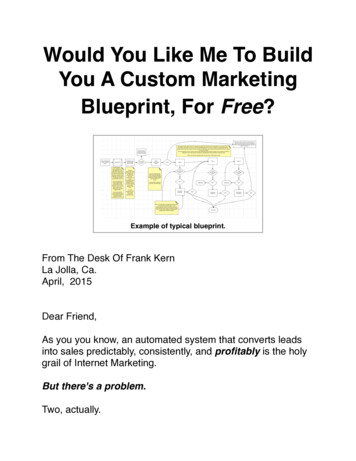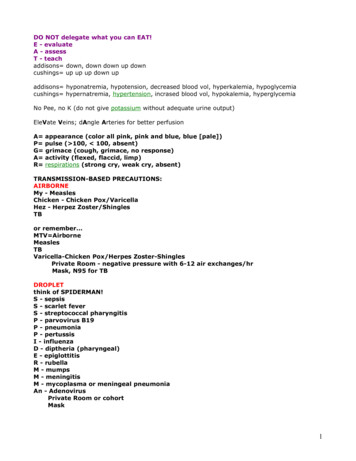
Transcription
DO NOT delegate what you can EAT!E - evaluateA - assessT - teachaddisons down, down down up downcushings up up up down upaddisons hyponatremia, hypotension, decreased blood vol, hyperkalemia, hypoglycemiacushings hypernatremia, hypertension, incrased blood vol, hypokalemia, hyperglycemiaNo Pee, no K (do not give potassium without adequate urine output)EleVate Veins; dAngle Arteries for better perfusionA appearance (color all pink, pink and blue, blue [pale])P pulse ( 100, 100, absent)G grimace (cough, grimace, no response)A activity (flexed, flaccid, limp)R respirations (strong cry, weak cry, absent)TRANSMISSION-BASED PRECAUTIONS:AIRBORNEMy - MeaslesChicken - Chicken Pox/VaricellaHez - Herpez Zoster/ShinglesTBor remember.MTV AirborneMeaslesTBVaricella-Chicken Pox/Herpes Zoster-ShinglesPrivate Room - negative pressure with 6-12 air exchanges/hrMask, N95 for TBDROPLETthink of SPIDERMAN!S - sepsisS - scarlet feverS - streptococcal pharyngitisP - parvovirus B19P - pneumoniaP - pertussisI - influenzaD - diptheria (pharyngeal)E - epiglottitisR - rubellaM - mumpsM - meningitisM - mycoplasma or meningeal pneumoniaAn - AdenovirusPrivate Room or cohortMask1
CONTACT PRECAUTIONMRS.WEEM - multidrug resistant organismR - respiratory infectionS - skin infections *W - wound infxnE - enteric infxn - clostridium difficileE - eye infxn - conjunctivitisSKIN INFECTIONSVCHIPSV - varicella zosterC - cutaneous diphtheriaH - herpez simplexI - impetigoP - pediculosisS - scabies1. Air/Pulmonary Embolism (S&S: chest pain, difficulty breathing, tachycardia, pale/cyanotic,sense of impending doom) -- turn pt to left side and lower the head of the bed.2. Woman in Labor w/ Un-reassuring FHR (late decels, decreased variability, fetalbradycardia, etc) -- turn on left side (and give O2, stop Pitocin, increase IV fluids)3. Tube Feeding w/ Decreased LOC -- position pt on right side (promotes emptying of thestomach) with the HOB elevated (to prevent aspiration)4. During Epidural Puncture -- side-lying5. After Lumbar Puncture (and also oil-based Myelogram)-- pt lies in flat supine (to preventheadache and leaking of CSF)6. Pt w/ Heat Stroke -- lie flat w/ legs elevated7. During Continuous Bladder Irrigation (CBI) -- catheter is taped to thigh so leg should bekept straight. No other positioning restrictions.8. After Myringotomy -- position on side of affected ear after surgery (allows drainage ofsecretions)9. After Cataract Surgery -- pt will sleep on unaffected side with a night shield for 1-4weeks.10. After Thyroidectomy -- low or semi-Fowler's, support head, neck and shoulders.11. Infant w/ Spina Bifida -- position prone (on abdomen) so that sac does not rupture12. Buck's Traction (skin traction) -- elevate foot of bed for counter-traction13. After Total Hip Replacement -- don't sleep on operated side, don't flex hip more than 4560 degrees, don't elevate HOB more than 45 degrees. Maintain hip abduction by separatingthighs with pillows.14. Prolapsed Cord -- knee-chest position or Trendelenburg2
15. Infant w/ Cleft Lip -- position on back or in infant seat to prevent trauma to suture line.While feeding, hold in upright position.16. To Prevent Dumping Syndrome (post-operative ulcer/stomach surgeries) -- eat inreclining position, lie down after meals for 20-30 minutes (also restrict fluids during meals, lowCHO and fiber diet, small frequent meals)17. Above Knee Amputation -- elevate for first 24 hours on pillow, position prone daily toprovide for hip extension.18. Below Knee Amputation -- foot of bed elevated for first 24 hours, position prone daily toprovide for hip extension.19. Detached Retina -- area of detachment should be in the dependent position20. Administration of Enema -- position pt in left side-lying (Sim's) with knee flexed21. After Supratentorial Surgery (incision behind hairline) -- elevate HOB 30-45 degrees22. After Infratentorial Surgery (incision at nape of neck)-- position pt flat and lateral oneither side.23. During Internal Radiation -- on bedrest while implant in place24. Autonomic Dysreflexia/Hyperreflexia (S&S: pounding headache, profuse sweating, nasalcongestion, goose flesh, bradycardia, hypertension) -- place client in sitting position (elevateHOB) first before any other implementation.25. Shock -- bedrest with extremities elevated 20 degrees, knees straight, head slightlyelevated (modified Trendelenburg)26. Head Injury -- elevate HOB 30 degrees to decrease intracranial pressure27. Peritoneal Dialysis when Outflow is Inadequate -- turn pt from side to side BEFOREchecking for kinks in tubing (according to Kaplan)28. Lumbar puncture AFTER the procedure, the client should be placed in the supineposition for 4 to 12 hrs as prescribed. (Saunders 3rd ed p. 229)Demorol for pancreatitis, NOT morphine sulfateMyasthenia Gravis: worsens with exercise and improves with rest.Myasthenia Crisis: a positive reaction to Tensilon--will improve symptomsCholinergic Crisis: caused by excessive medication-stop med-giving Tensilon will make it worseHead injury medication: Mannitol (osmotic diuretic)-crystallizes at room temp so ALWAYS usefilter needlePrior to a liver biospy its important to be aware of the lab result for prothrombin timeFrom the a** (diarrhea) metabolic acidosisFrom the mouth (vomitus) metabolic alkalosisMyxedema/hypothyroidism: slowed physical and mental function, sensitivity to cold, dry skinand hair3
Graves’ disease/hyperthyroidism: accelerated physical and mental function; sensitivity toheat, fine/soft hairThyroid storm: increased temp, pulse and HTNPost-thyroidectomy: semi-Fowler’s, prevent ncek flexion/hyperextension, trach at bedsideHypo-parathyroid: CATS – convulsions, arrhythmias, tetany, spasms, stridor (decreasedcalcium), high Ca, low phosphorus dietHyper-parathyroid: fatigue, muscle weakness, renal calculi, back and joint pain (increasedcalcium), low Ca, high phosphorus dietHypovolemia – incrased temp, rapid/weak pulse, increase respiration, hypotension, anxiety,urine specific gravity 1.030Hypervolemia – bounding pulse, SOB, dyspnea, rares/crackles, peripheral edema, HTN, urinespecific gravity 1.010; Semi-Fowler’sDiabetes Insipidus (decreased ADH): excessive urine output and thirst, dehydration,weakness, administer PitressinSIADH (increased ADH): change in LOC, decreased deep tendon reflexes, tachycardia, n/v/a,HA; administer Declomycin, diureticsHypokalemia: muscle ewakness, dysrhythmias, increase K (raisins, bananas, apricots, oranges,beans, potatoes, carrots, celery)Hyperkalemia: MURDER – muscle weakness, urine (oliguria/anuria), respiratory depression,decreased cardiac contractility, ECG changes, reflexesHyponatremia: nausea, muscle cramps, increased ICP, muscular twitching, convulsion; osmoticdiuretics, fluidsHypernatremia: increased temp, weakness, disorientation/delusions, hypotension, tachycardia;hypotonic solutionHypocalcemia: CATS – convulsions, arrhythmias, tetany, spasms and stridorHypercalcemia: muscle weakness, lack of coordination, abdominal pain, confusion, absenttendon reflexes, sedative effect on CNSHypoMg: tremors, tetany, seizures, dyrshythmias, depression, confusion, dysphagia; dig toxicityHyperMg: depresses the CNS, hypotension, facial flushing, muscle ewakness, absent deeptendon reflexes, shallow respirations, emergencyAddison’s: hypoNa, hyperK, hypoglycemia, dark pigmentation, decreased resistance to stress,fractures, alopecia, weight loss, GI distressCushings: hyperNa, hypoK, hyperglycemia, prone to infection, muscle wasting, weakness,edema, HTN, hirsutism, moonface/buffalo humpAddisonian crisis: n/v, confusion, abdominal pain, extreme weakness, hypoglycemia,dehydration, decreased BPPheochromocytoma: hypersecretion of epi/norepi, persistent HTN, increased HR,hyperglycemia, diaphoresis, tremor, pounding HA; avoid stress, frequent bating and rest breaks,avoid cold and stimulating foods, surgery to remove tumor1. Neuroleptic malignant syndrome (NMS):-NMS is like S&M;-you get hot (hyperpyrexia)-stiff (increased muscle tone)-sweaty (diaphoresis)-BP, pulse, and respirations go up &-you start to drool4
2. I kept forgetting which was dangerous when you're pregnant; regular measles (rubeola), orGerman measles (rubella), so remember:-never get pregnant with a German (rubella)3. When drawing up regular insulin & NPH together, remember:-RN (regular comes before NPH)4. Tetralogy of fallot; remember HOPSThink DROP(child drops to floor or squats) or POSHDefect, septalRight Ventricular hypertrophyOverriding aortsPulmonary stenosis5. MAOI's that are used as antidepressants:weird way to remember, I know. pirates say arrrr, so think; pirates take MAOI's when they'redepressed.- explanation; MAOI's used for depression all have an arrr sound in the middle (Parnate, Marplan,Nardil)Autonomic dysreflexia: potentially life threatening emergency- elevate head of bed to 90 degree- loosen constrictive clothing- assess for bladder distention and bowel impaction (triger)- Administer antihypertensive meds (may cause stroke, MI, seisure )easy way to remember MAOI'S!think of PANAMA!PA - parnateNA - nardilMA - marplanmetallic bitter taste.Digoxin-check pulse, less than 60 hold, check dig levels and potassium levels.Amphojel: tx of GERD and kidney stones.watch out for contipation.Vistaril: tx of anxiety and also itching.watch for dry mouth. given preop commonlyVersed: given for conscious sedation.watch for resp depression and hypotensionPTU and Tapazole- prevention of thyroid stormSinemet: tx of parkinson.sweat, saliva, urine may turn reddish brown occassionally.causesdrowsinessArtane: tx of parkinson.sedative effect alsoCogentin: tx of parkinson and extrapyramidal effects of other drugsTigan: tx of postop n/v and for nausea associated with gastroenteritisTimolol (Timoptic)-tx of gluacoma5
Bactrim: antibiotic.dont take if allergic to sulfa drugs.diarrhea common side effect.drink plentyof fluidsGout Meds: Probenecid (Benemid), Colchicine, Allopurinol (Zyloprim)Apresoline(hydralazine)-tx of HTN or CHF, Report flu-like symptoms, rise slowly from sitting/lyingposition; take with meals.Bentyl: tx of irritable bowel.assess for anticholinergic side effects.Calan (verapamil): calcium channel blocker: tx of HTN, angina.assess for constipationCarafate: tx of duodenal ulcers.coats the ulcer.so take before meals.Theophylline: tx of asthma or COPD.therap drug level: 10-20Mucomyst is the antedote to tylenol and is administered orallyDiamox: tx of glaucoma, high altitude sickness.dont take if allergic to sulfa drugsIndocin: (nsaid) tx of arthritis (osteo, rhematoid, gouty), bursitis, and tendonitis.Synthroid: tx of hypothyroidism.may take several weeks to take effect.notify doctor of chestpain.take in the AM on empty stomach.could cause hyperthyroidism.Librium: tx of alcohol w/d.dont take alchol with this.very bad nausea and vomiting can occur.Oncovin (vincristine): tx of leukemia.given IV ONLYkwell: tx of scabies and lice.(scabies)apply lotion once and leave on for 8-12 hours.(lice) usethe shampoo and leave on for 4 minutes with hair uncovered then rinse with warm water andcomb with a fine tooth combPremarin:tx after menopause estrogen replacementDilantin: tx of seizures. thera drug level: 10-20Navane: tx of schizophrenia.assess for EPSRitalin: tx of ADHD.assess for heart related side effects report immediately.child may need adrug holiday b/c it stunts growth.dopamine (Intropine): tx of hypotension, shock, low cardiac output, poor perfusion to vitalorgans.monitor EKG for arrhythmias, monitor BPHave trouble remembering fhr patterns in OB? Think VEAL CHOPVCEHAOLPV variable decels; C cord compression causedE early decels; H head compression causedA accels; O okay, not a problem!L late decels placental insufficiency, can't fill6
For cord compression, place the mother in the TRENDELENBERG position because this removespressure of the presenting part off the cord. (If her head is down, the baby is no longer beingpulled out of hte body by gravity)If the cord is prolapsed, cover it with sterile saline gauze to prevent drying of the cord and tominimize infection.For late decels, turn the mother to her left side, to allow more blood flow to the placenta.For any kind of bad fetal heart rate pattern, you give O2, often by mask.When doing an epidural anesthesia hydration before hand is a priority.Hypotension and bradypnea / bradycardia are major risks and emergencies.NEVER check the monitor or a machine as a first action. Always assess the patient first; forexmaple listen to the fetal heart tones with a stethoscope in NCLEX land. Sometimes it's hard totell who to check on first, the mother or the baby; it's usually easy to tell the right answer if themother or baby involves a machine. If you're not sure who to check first, and one of the choicesinvolves the machine, that's the wrong answer.If the baby is a posterior presentation, the sounds are heard at the sides.If the baby is anterior, the sounds are heard closer to midline, between teh umbilicus and whereyou would listen to a posterior presentation.If the baby is breech, the sounds are high up in the fundus near the umbilicus. If the baby isvertex, they are a little bit above the symphysis pubis.Also for ventilator alarmsHOLDHigh alarm- Obstruction due to incr. secretions, kink, pt. coughs, gag or bitesLow press alarm- Disconnection or leak in ventilatior or in pt. airway cuff, pt. stops spontaneousbreathing1. to remember blood sugar:hot and dry-sugar high (hyperglycemia)cold and clammy-need some candy (hypoglycemia)2. ICP AND SHOCK HAVE OPPOSITE V/SICP-increased BP, decreased pulse, decreased resp.shock- decreased BP, increased pulse, increased resp.3. cor pulmonae: right sided heart failure caused by left ventricular failure (so pick edema, jvd, ifit is a choice.)4. herion withdrawal neonate: irratable poor sucking5. Jews: no meat and milk together6. Brachial pulse: pulse area cpr o
exmaple listen to the fetal heart tones with a stethoscope in NCLEX land. Sometimes it's hard to tell who to check on first, the mother or the baby; it's usually easy to tell the right answer if the mother or baby involves a machine. If you're not sure who to check first, and one of the choices involves the machine, that's the wrong answer.

